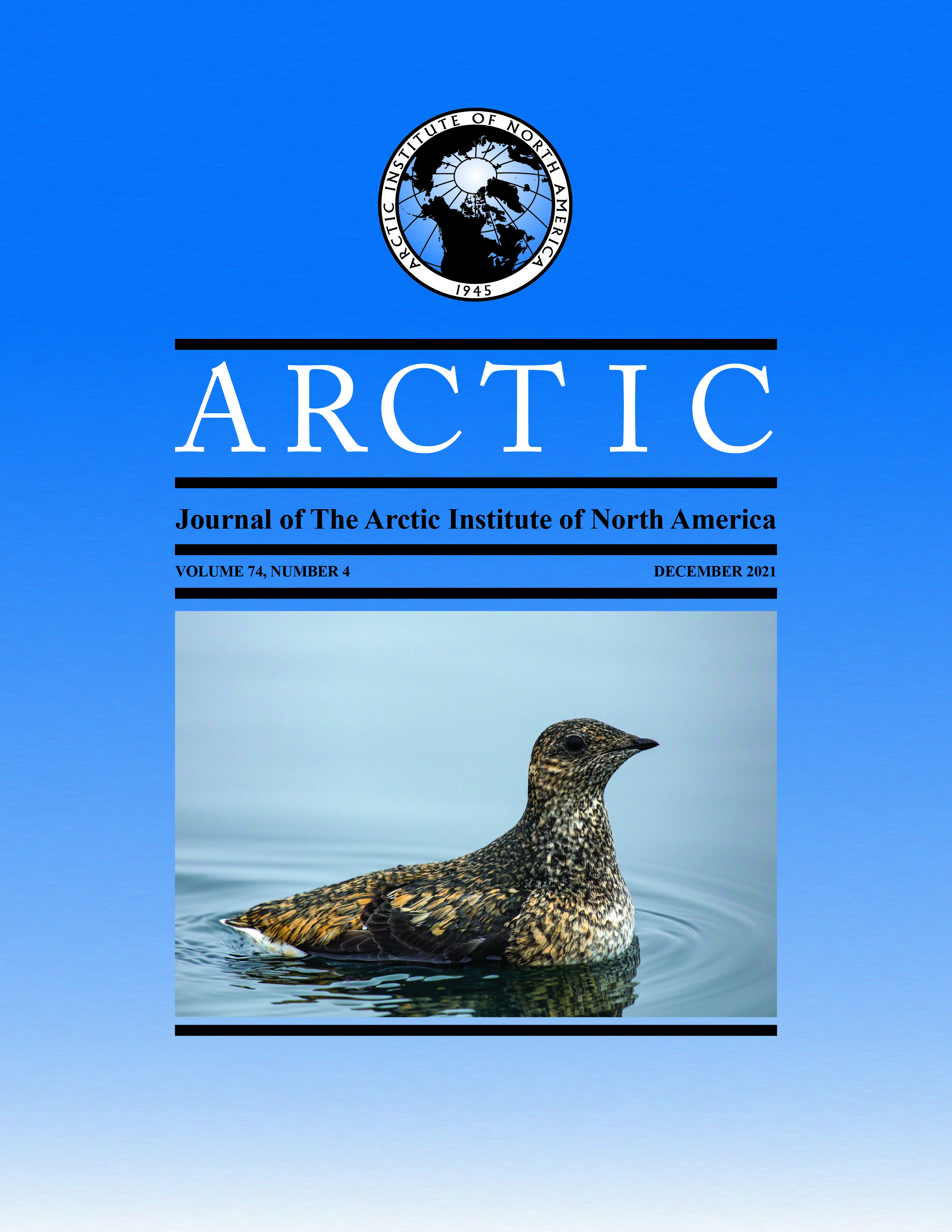Recovery From Reduction: The M’Clintock Channel Polar Bear Subpopulation, Nunavut, Canada
DOI:
https://doi.org/10.14430/arctic74053Keywords:
capture-mark-recapture; demography; genetic biopsy sampling; Nunavut; polar bear; superpopulation; Ursus maritimusAbstract
To retain viable polar bear subpopulations, scientific monitoring studies are conducted to inform adaptive management frameworks. Here we report the results of the second structured population study for polar bears in the M’Clintock Channel (MC) subpopulation. Data included biopsy samples collected during a 2014 – 16 subpopulation-wide survey, live mark-recapture data collected during the first subpopulation study from 1998 to 2000, and harvest recovery data from 1998 to 2016. Results of a closed capture-recapture model, implemented in a Bayesian framework for animals over 2 yr., produced a mean abundance estimate of 716 (95% Credible Interval = 545 – 955) for 2014 – 16, indicating an increase from the 1998 – 2000 study estimate (284; our Bayesian-calculated estimate: 325 bears). However, closed model assumptions mean our estimate represents the superpopulation. Mean litter sizes did not differ between study periods, but mean number of yearlings per adult female declined from 0.39 ± 0.10 (SE) to 0.27 ± 0.06 between 1998 – 2000 and 2014 – 16. Apparent survival estimates from observed data were biased low (0.88 ± 0.02) due to unknown immigration and emigration. However, survival calculated using the change in abundance estimates between study periods equaled 0.93, representing a population growth rate of 2%. Body condition improved between study periods. Our findings indicate the MC subpopulation recovered from overharvesting between 1979 and 1999 and may be transiently benefitting from increased biological productivity associated with local sea ice changes. Our demographic analyses were constrained by low density, low harvest, small sample sizes, low recapture probability, and lack of movement information; hence, harvest management decisions should be applied with appropriate caution.
Downloads
Downloads
Published
Issue
Section
License
Copyright (c) 2021 ARCTIC

This work is licensed under a Creative Commons Attribution 4.0 International License.


